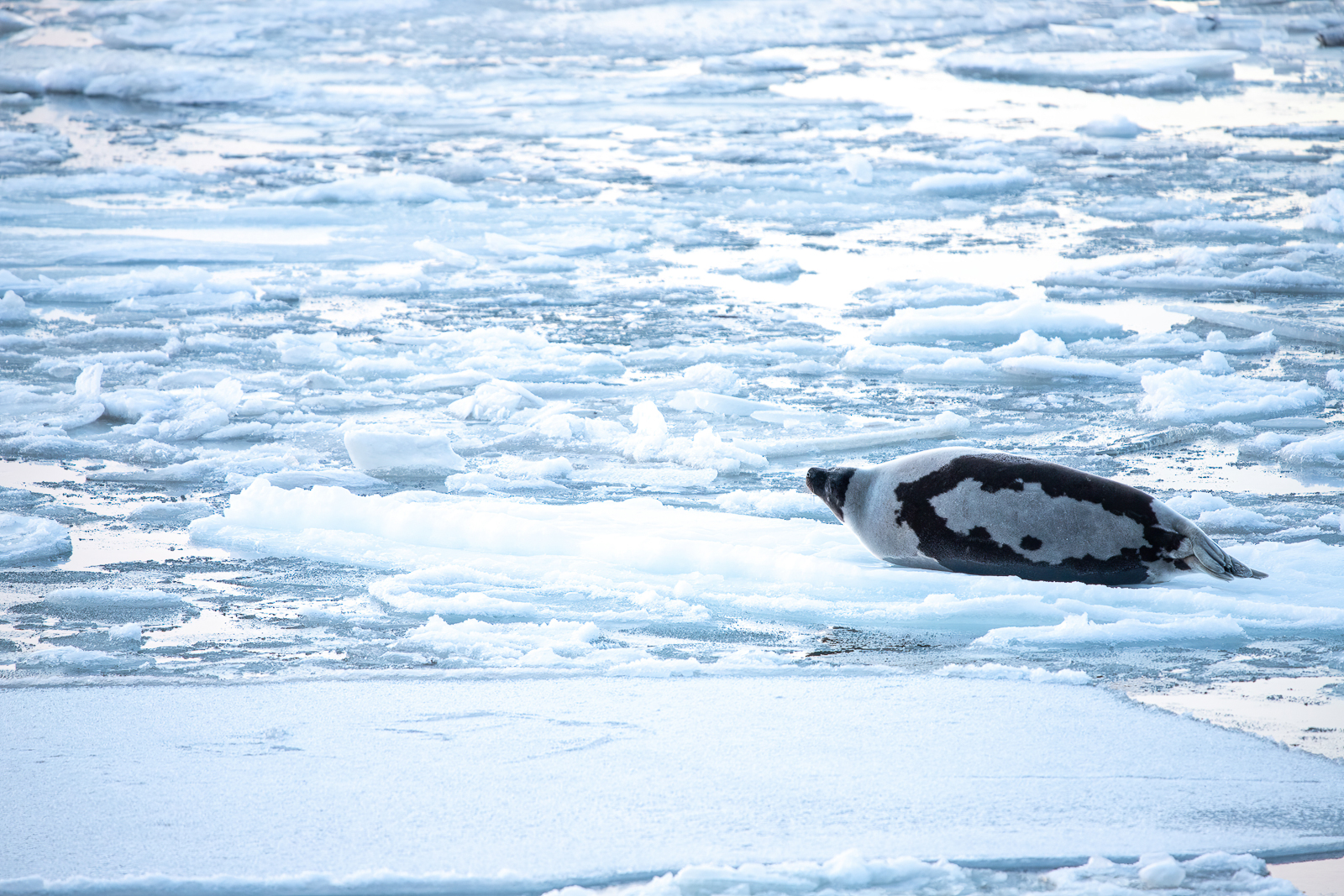
SIZE:
1.6 m for 130 to 150 kg.
LIFE EXPECTANCY:
25 to 40 years.
LIFE CYCLE:
Sexual maturity is reached at around 5 years of age.
The females give birth to a calf weighing approximately 11 kg between February and March. The young, called pups, are nursed by the female and gain 2.2 kg per day. After 10 to 12 days of nursing, the pups are weaned. As the pups moult, they lose their white coat and become a mottled grey-white. As adults, the seals are grey-white with a black spot on their back.
The harp seal has grey-white fur with a black patch on its back. Its hair, which points backward, enables it to cling to the ice floe (like cross-country ski skins). It has a small head, which is black in adults, and large, bulging eyes. Its sensitive whiskers enable it to hunt in the darkness of the deep waters. Its short front legs help it to navigate, and its hind legs help to propel the seal. Its powerful claws enable the seal to grip and climb onto the ice.
Offshore, near the coast, on ice floes. Dives to depths of 400 m.
Seasonal resident of the St. Lawrence in fall and winter; returns to the Arctic and Greenlandic waters in spring.

In winter, harp seals frequent the pack ice that forms in the St. Lawrence.
Credit: Jean-Christophe Lemay, photo taken in Rimouski, in 2018.
PREYS:
Fish
Shrimp
PREDATORS:
Sharks
Orcas
MACHINES:
Hakapik, club or firearm.
REGULATIONS:
- Hunting permits mandatory; training is required to obtain them
- Quotas
- Specified hunting season
Seal hunting is one of the most controlled and sustainable methods of hunting.
Fish or meat?
In the far past, seal was considered to be a fish; its meat could, therefore, be eaten during Lent. Even today, in terms of regulations, seals are considered fish by the Federal Government, as they live in the water, and as meat by MAPAQ because they are mammals.
Harp seal is a Smarter seafood-listed species.
BENEFITS:
Seal meat is a natural “superfood” available in our own backyard: high in protein, low in fat and highly nutritious.
Particularly rich in iron, zinc, magnesium and vitamin B12.
As it is wild meat, there is no risk of it containing growth hormones or antibiotics.
Seal oil also has its merits because of its omega-3 fatty acid content. These fatty acids improve mental, cognitive and cardiovascular health and also boost the immune system.
LET’S COOK:
Ferrous taste, similar to deer or moose meat, with a hint of iodine that evokes the sea.
OUR CULINARY ADVICE:
- Preparation
- Remove the fat, which adds a bitter taste.
- Salt the meat to remove the water. Pat dry rather than rinse before cooking.
- Freeze pieces of meat that are more difficult to cut.
- Cooking
- Sear the meat for one or two minutes on each side, turning only once.
- Season as you start cooking.
- Do not overcook, as the meat will dry out quickly and lose its tender texture.
- After cooking
- Allow the meat to rest before cutting.
- Seasoning
- Smoked mushroom powder, seaweed, and red wine.






